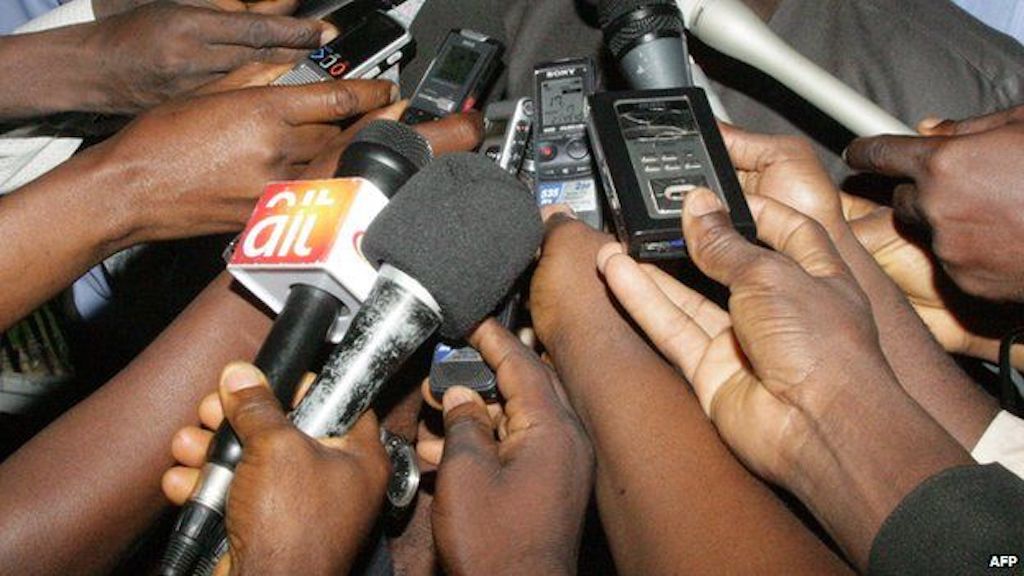Empowering Photojournalism: Leveraging AI Tools for Ethical Reporting and Truthful Storytelling, By Ojo Emmanuel Ademola
By Ojo Emmanuel Ademola
In the realm of photojournalism, the rightful usage of images with appropriate AI tools serves as a powerful tool in combating misinformation and enhancing the credibility of news reporting. By leveraging AI technologies such as image verification algorithms, photojournalists can ensure the authenticity and accuracy of visuals used in their stories. These tools not only aid in verifying the legitimacy of images but also play a crucial role in upholding ethical standards and promoting transparency in journalistic practices. In exploring the intersection of AI and photojournalism, valuable lessons emerge for practitioners on the importance of verification, the role of technology in combating misinformation, ethical considerations in image analysis, and the need for continuous learning and adaptation in an evolving media landscape.
In today’s digital age, the spread of misinformation and misrepresentation in the media has become a significant concern. With the rapid proliferation of news stories, images, and information circulating online, it has become increasingly challenging for media practitioners to verify the accuracy and authenticity of the content they publish. Misrepresentation, whether intentional or unintentional, can have serious consequences, leading to misinformation, mistrust, and damage to an individual or organization’s reputation.
This is where artificial intelligence (AI) can play a vital role in addressing the issue of misrepresentation in media content. One of the primary ways AI can help is through the use of image recognition technology. By leveraging advanced algorithms and machine learning models, AI can analyze the content of images to detect and flag instances of fraudulent or misleading visuals in news stories. This technology can compare the characteristics of an image with known sources or databases to verify its authenticity and ensure that accompanying photos in news stories are accurate and not misrepresented.
Furthermore, AI can be utilized to fact-check the information in news stories to corroborate its accuracy and prevent misleading content from being disseminated. Natural language processing (NLP) algorithms can analyze the text of news stories to identify any inconsistencies, inaccuracies, or false claims. Machine learning models can quickly scan through vast amounts of text to detect patterns and deviations that may signify misleading information. By automating the fact-checking process, AI can support media practitioners in verifying the credibility of their reporting and ultimately improve the quality and accuracy of news content.
Overall, AI can play a crucial role in enhancing the integrity and reliability of news reporting by identifying and preventing instances of misrepresentation in media content. By leveraging technology to augment the work of media professionals, we can ensure that news stories are presented accurately and ethically to the public. This not only helps to combat misinformation but also fosters trust and credibility in the media industry. As we continue to navigate the complex landscape of digital media, AI stands as a valuable tool in upholding journalistic standards and promoting responsible reporting practices.
In expanding further on how AI can help in addressing misrepresentation in media content, it is important to consider the various challenges, thought processes, and potential solutions that can be implemented to ensure the integrity and accuracy of news reporting.
Challenges:
1. Rapid Spread of Misinformation: In the digital age, news stories and information can spread rapidly across multiple platforms, making it difficult for media practitioners to verify the accuracy of content before it reaches a wide audience.
2. Increased Sophistication of Misinformation Tactics: Misinformation campaigns can be orchestrated with advanced techniques such as deepfake technology, making it challenging for journalists to differentiate between authentic and fabricated content.
3. Limited Resources for Fact-Checking: Media organizations may lack the resources and manpower to conduct thorough fact-checking processes on every news story, leaving room for potential misrepresentation to go unchecked.
Thought Processes:
1. Leveraging AI for Image Analysis: AI-powered image recognition technology can be used to analyze the content of images in news stories and detect any signs of manipulation or misrepresentation. By examining visual elements such as metadata, pixel patterns, and image alterations, AI can help media practitioners identify and flag fraudulent visuals.
2. Implementing Automated Fact-Checking Systems: AI-driven fact-checking tools can be integrated into newsrooms to automatically scan through the text and identify any inaccuracies or inconsistencies in reporting. By leveraging NLP algorithms and machine learning models, these systems can provide real-time feedback to journalists and support them in ensuring the credibility of their content.
3. Collaborating with Technology Experts: Media organizations can collaborate with technology experts and AI researchers to develop tailored solutions for combating misrepresentation in media content. By combining domain expertise in journalism with technical knowledge in artificial intelligence, collaborative efforts can lead to innovative strategies for enhancing news reporting practices.
Solutions:
1. Training Programs on AI Tools: Media professionals can undergo training programs to familiarize themselves with AI tools and technologies that can aid in verifying the accuracy of news content. By equipping journalists with the necessary skills to leverage AI for fact-checking and image analysis, media organizations can enhance the overall quality of their reporting.
2. Ethical Guidelines for AI Implementation: To ensure the responsible use of AI in newsrooms, ethical guidelines and best practices should be established for integrating artificial intelligence into media workflows. These guidelines can address issues such as data privacy, transparency, and accountability in AI-driven processes.
3. Continuous Monitoring and Evaluation: Media organizations should continuously monitor and evaluate the effectiveness of AI-based solutions in addressing misrepresentation in media content. By collecting feedback from journalists, audiences, and experts, media organizations can refine their strategies and adapt to emerging challenges in the digital media landscape.
Surmising, by acknowledging the challenges, exploring thought processes, and implementing solutions, media organizations can harness the power of AI to combat misrepresentation in news reporting. Through a collaborative and proactive approach, the integration of artificial intelligence can contribute to upholding journalistic standards, promoting accuracy, and fostering trust in the media industry. As technology continues to evolve, leveraging AI as a tool for enhancing media practices is essential in navigating the complexities of the digital information ecosystem.
In the realm of photojournalism, the rightful usage of images with appropriate AI tools serves as a powerful tool in combating misinformation and enhancing the credibility of news reporting. By leveraging AI technologies such as image verification algorithms, photojournalists can ensure the authenticity and accuracy of visuals used in their stories. These tools not only aid in verifying the legitimacy of images but also play a crucial role in upholding ethical standards and promoting transparency in journalistic practices. In exploring the intersection of AI and photojournalism, valuable lessons emerge for practitioners on the importance of verification, the role of technology in combating misinformation, ethical considerations in image analysis, and the need for continuous learning and adaptation in an evolving media landscape.
One example of the rightful usage of images with appropriate AI tools in photojournalism is the implementation of image verification technology to combat misinformation. AI tools such as reverse image search algorithms can help journalists verify the authenticity of images by cross-referencing them with known sources or by identifying instances of image manipulation.
For instance, during breaking news events or in conflict zones, journalists often rely on user-generated content and eyewitness photos. AI-powered tools can assist in quickly determining the credibility of these images by analyzing metadata, conducting reverse image searches, and detecting digital alterations. This can help journalists ensure that the images they use in their reporting are accurate and authentic, thereby enhancing the credibility of their stories.
Lessons for photojournalism in leveraging AI tools include:
1. Emphasizing Verification: Photojournalists should prioritize the verification of images before publishing them in news stories. AI tools can aid in this process by providing quick and reliable methods for validating the authenticity of visuals.
2. Combating Misinformation: Given the prevalence of misinformation in the digital age, photojournalists should be vigilant in identifying and debunking misleading or fabricated images. AI-powered image recognition technology can help in flagging instances of manipulated visuals and supporting journalists in maintaining the integrity of their reporting.
3. Ethical Considerations: When utilizing AI tools for image analysis, photojournalists should adhere to ethical guidelines and best practices. This includes respecting individuals’ privacy rights, ensuring transparency in the use of AI algorithms, and upholding journalistic standards in the selection and presentation of images.
4. Continuous Learning and Adaptation: Photojournalists should engage in ongoing training and education to stay informed about the latest AI tools and technologies available for image verification. By staying attuned to advancements in the field of artificial intelligence, journalists can leverage innovative solutions for enhancing the accuracy and credibility of their visual storytelling.
Overall, the rightful usage of images with appropriate AI tools in photojournalism can contribute to strengthening the authenticity and trustworthiness of news content. By integrating AI technology into photojournalistic practices and emphasizing the importance of verification, journalists can uphold the principles of ethical reporting and contribute to a more informed and responsible media ecosystem.
As the digital landscape continues to evolve and challenges such as misinformation and fake news persist, the role of AI tools in photojournalism becomes increasingly significant. By embracing these technologies and using them responsibly, photojournalists can uphold the integrity of their work and provide the public with accurate and trustworthy information. The lessons learned from the integration of AI in photojournalism underscore the importance of ethical practices, the necessity of adaptability in a rapidly changing media environment, and the potential for technology to be a force for good in the pursuit of truth and transparency. By leveraging AI tools effectively, photojournalists can not only enhance their storytelling capabilities but also contribute to a more informed and discerning society.



